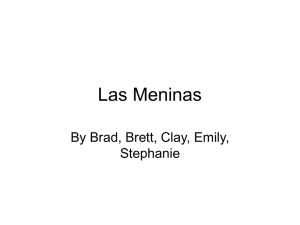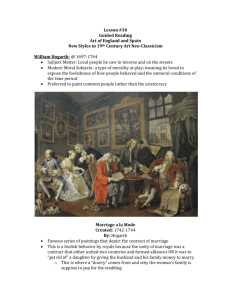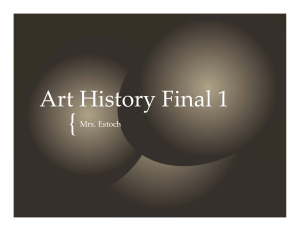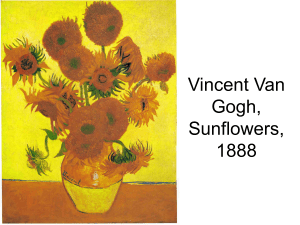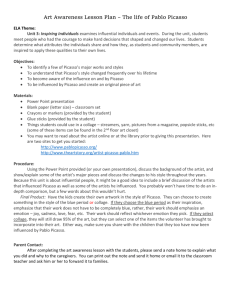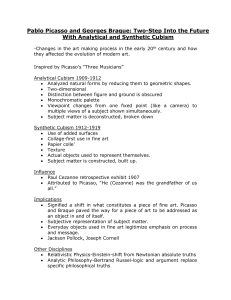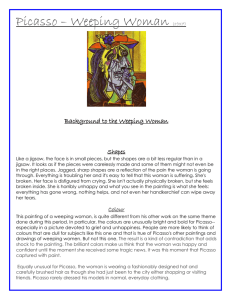Text 9 Spanish Influence on World Art.
advertisement
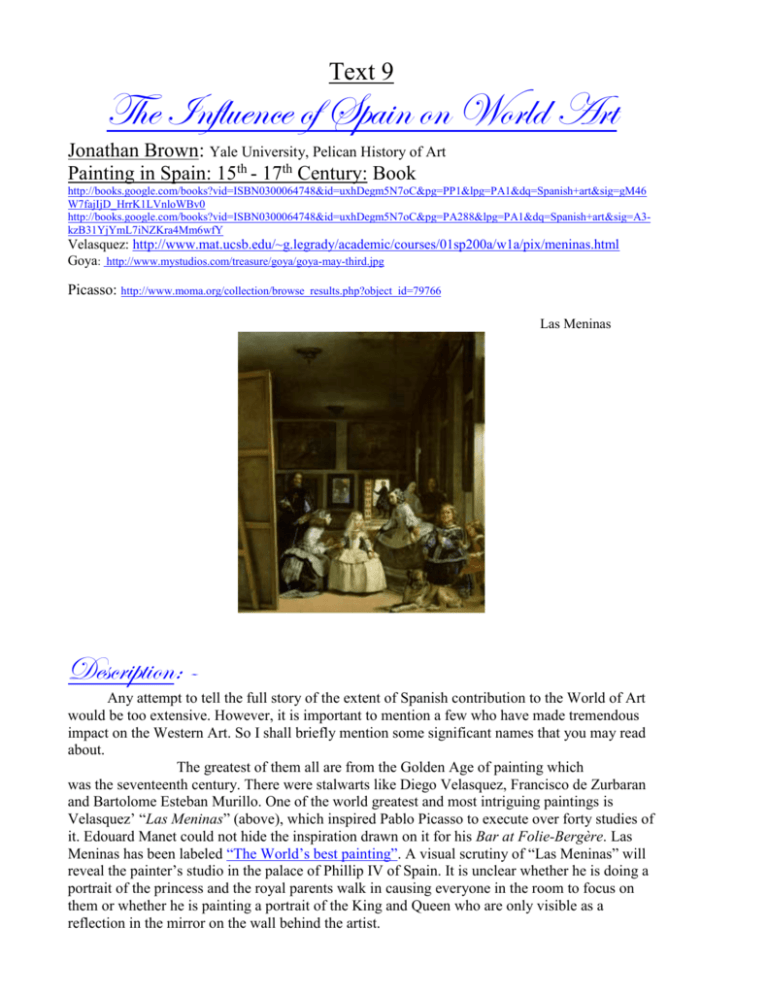
Text 9 The Influence of Spain on World Art Jonathan Brown: Yale University, Pelican History of Art Painting in Spain: 15th - 17th Century: Book http://books.google.com/books?vid=ISBN0300064748&id=uxhDegm5N7oC&pg=PP1&lpg=PA1&dq=Spanish+art&sig=gM46 W7fajIjD_HrrK1LVnloWBv0 http://books.google.com/books?vid=ISBN0300064748&id=uxhDegm5N7oC&pg=PA288&lpg=PA1&dq=Spanish+art&sig=A3kzB31YjYmL7iNZKra4Mm6wfY Velasquez: http://www.mat.ucsb.edu/~g.legrady/academic/courses/01sp200a/w1a/pix/meninas.html Goya: http://www.mystudios.com/treasure/goya/goya-may-third.jpg Picasso: http://www.moma.org/collection/browse_results.php?object_id=79766 Las Meninas Description: Any attempt to tell the full story of the extent of Spanish contribution to the World of Art would be too extensive. However, it is important to mention a few who have made tremendous impact on the Western Art. So I shall briefly mention some significant names that you may read about. The greatest of them all are from the Golden Age of painting which was the seventeenth century. There were stalwarts like Diego Velasquez, Francisco de Zurbaran and Bartolome Esteban Murillo. One of the world greatest and most intriguing paintings is Velasquez’ “Las Meninas” (above), which inspired Pablo Picasso to execute over forty studies of it. Edouard Manet could not hide the inspiration drawn on it for his Bar at Folie-Bergère. Las Meninas has been labeled “The World’s best painting”. A visual scrutiny of “Las Meninas” will reveal the painter’s studio in the palace of Phillip IV of Spain. It is unclear whether he is doing a portrait of the princess and the royal parents walk in causing everyone in the room to focus on them or whether he is painting a portrait of the King and Queen who are only visible as a reflection in the mirror on the wall behind the artist. Goya In the eighteenth and nineteen century, another great Spanish painter left an indelible mark of the world of art. He was Francisco de Goya. Goya’s works were the most daring of all, for his defiance and lampooning of authority. Goya’s third of May is another of the world’s greatest masterpieces that has challenge subsequent masters like Manet and Picasso, founders of their own school of art, to copy it. This is Goya’s response to the bloody slaughter of Spanish peasants by Napoleon’s troops, who retaliated for the revolt of the day before. Goya portrays faceless soldiers who are executing a civilian in a pose like the crucifixion. He takes a stab at the church, whose darkness appears as complicity in the murderous act. Goya: The Third of May Pablo Picasso Les Demoiselles d’Avignon by Pablo Picasso A history of World Art without mention of Picasso is incomplete. In the twentieth century, we witness a radical transformation in the concept of what was considered painting from the brushes of Pablo Picasso. Picasso’s “Les Demoiselles d’ Avignon” has been labeled as the most famous painting of the 20th century, ushering in the most dramatic change in art history since the Renaissance. It marks the introduction of one of the greatest styles of painting in the 20th century, Cubism. It reflects the departure from traditional three-dimensional painting. His initial intention was to produce a work of art that could surpass the modernity of Matisse’s “Joie de Vivre”. Influenced by the short broken brush strokes of Cezanne and African masks, Picasso created a masterpiece, which stands out as the most famous work of the 20th century. Task Search the Internet to find versions Velasquez’ and Goya’s famous paintings, “Las Meninas” and “Third of May” reworked by Manet and Picasso. Create a power point presentation showing the original and the copy. Explain your observations of how Picasso and Manet transform these great paintings. (Clue: Manet’s version of Goya’s Third of May is called “Execution of Emperor Maximillian” and his “Bar at Folie-Bergère” is influenced by Velasquez’ “ Las Meninas” Picasso’s version of Goya’s Third of May is called Massacre in Korea. He also painted fifteen versions of Velasquez’ Las Meninas.What significant devices did they borrow?

